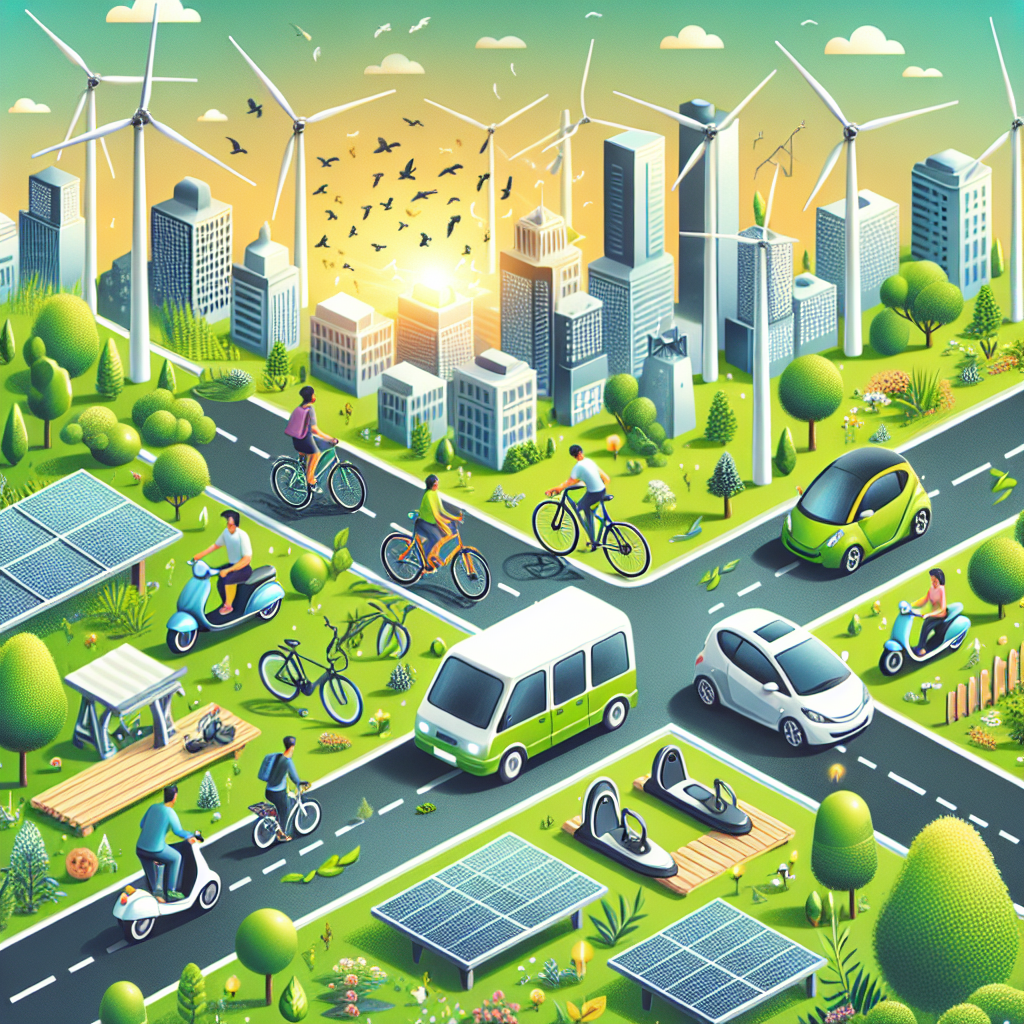As concerns about climate change continue to grow, the future of transportation is looking greener than ever. Sustainable travel, green vehicles, and eco mobility are all becoming increasingly important as we strive to reduce our carbon footprint and protect the environment for future generations.
One of the most exciting developments in green transportation is the rise of electric vehicles (EVs). These vehicles run on electricity rather than gasoline, which means they produce zero emissions while driving. As technology continues to improve, EVs are becoming more affordable and practical for everyday use. Companies like Tesla have been leading the way in this space, with sleek and powerful electric cars that are changing the way we think about transportation.
In addition to EVs, there are also other green vehicle options emerging on the market. Hydrogen fuel cell vehicles use hydrogen gas to power an electric motor, emitting only water vapor as a byproduct. These vehicles have a longer range than traditional EVs and can be refueled quickly, making them a promising alternative for long-distance travel.
Another key innovation in green transportation is the development of autonomous vehicles. Self-driving cars have the potential to revolutionize how we get around, reducing traffic congestion and emissions by optimizing routes and driving behavior. Companies like Google’s Waymo and Uber are already testing autonomous vehicles on public roads, and it’s only a matter of time before they become a common sight on our streets.
But it’s not just about the vehicles themselves – sustainable travel also involves rethinking how we plan our journeys. Public transportation plays a crucial role in reducing emissions and congestion in urban areas. Cities around the world are investing in new transit systems like buses, trains, and bike-sharing programs to encourage people to leave their cars at home. By making public transportation more convenient and accessible, we can help reduce our impact on the environment while also improving quality of life for residents.
Innovations in eco mobility extend beyond just cars and public transit. Electric scooters and bikes are becoming popular options for short trips around town, offering a convenient and environmentally friendly way to get from A to B. Ride-sharing services like Lyft and Uber are also incorporating more electric vehicles into their fleets, giving customers the option to choose a greener ride when they need one.
Looking ahead, there are even more exciting technologies on the horizon that could further transform how we think about transportation. Electric planes are being developed that could one day replace traditional jet engines with electric motors powered by renewable energy sources. Hyperloop technology promises ultra-fast travel between cities using magnetic levitation and vacuum tubes – potentially revolutionizing long-distance travel while drastically reducing emissions.
As consumers become more aware of their environmental impact, demand for green transportation options will only continue to grow. Companies that prioritize sustainability in their products and services will have a competitive edge in this rapidly evolving market. Whether it’s through electric cars, public transit improvements, or innovative new technologies, there’s no doubt that the future of transportation is looking greener than ever.

Leave a Reply